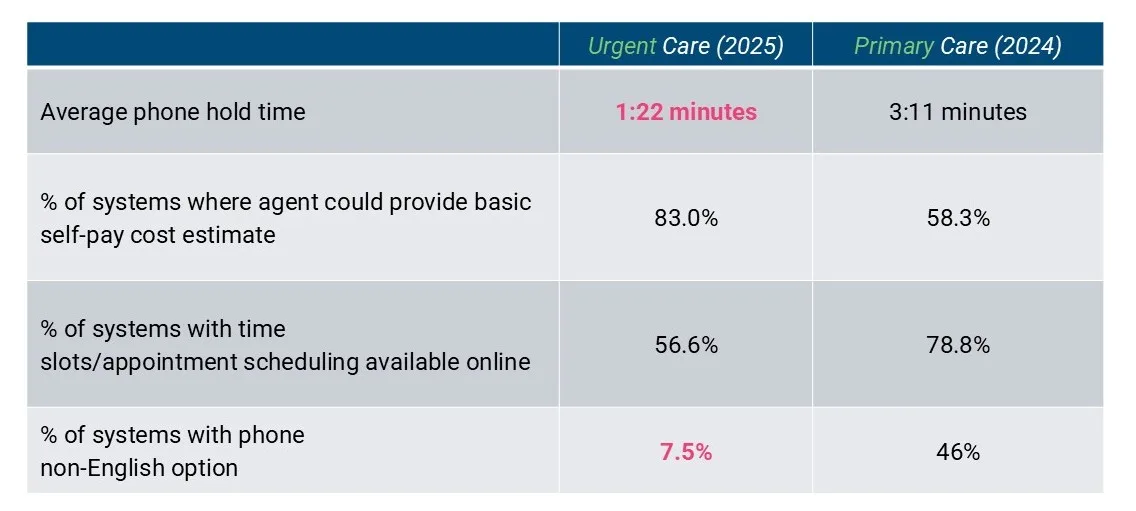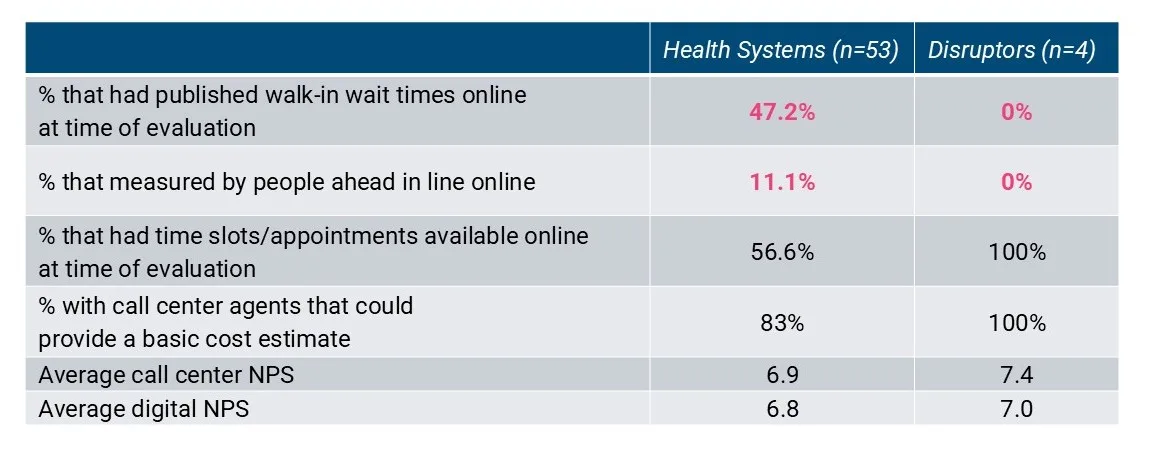Urgent care has continued to see an uptick in utilization, with health systems responding by increasing their footprint, either through new physical sites, or offering virtual urgent care—which has become table stakes.

While much of this growth was no doubt fueled by the pandemic, non-Covid commercial volumes increased 33% between 2019 and 2023. The care setting’s popularity is due to offering a solution to two of the most critical challenges facing health systems: cost and access.
Cost: urgent care serves as a cheaper alternative to emergency care. 2022 saw 206M urgent care volumes compared to 131M in volume at EDs. Interestingly, we’ve also seen a trend re-emerge. The hybrid ED-Urgent care setting where patients are triaged (and billed) to the right level of care upon arrival. Intuitive Health is one company that has partnered with health systems to deploy this model.
Access: With average wait times for a primary care appointment anywhere from 12-22 days, patients can access urgent care same day in the majority of cases. Access issues are leading to an increase in pediatric and Medicare volumes as well. And it’s not just happening with commercial…

Given patient’s behavior in using urgent care as a substitute for both primary and emergent care, we conducted a secret shopping exercise of urgent care owned by health systems, to understand 1) what patients are experiencing 2) where industry partners can close the existing experience gaps. Two care concerns were used as a pretense for seeking care: ankle injury and respiratory illness.
Key Findings
1. While fewer health systems offer true scheduling for urgent care compared to primary care, those that do provide a superior user experience. Health systems with urgent care scheduling offer streamlined registration showing clinic locations, real-time appointment availability, and flexible booking channels.

2. The "walk-in only" model is becoming obsolete. Healthcare systems that rely solely on walk-ins are losing out to those that offer a hybrid approach, with real-time load balancing across locations. Innovative systems and disruptors are responding to consumer expectations with options to reserve their spot and make appointments.

3. Systems partnering with specialized urgent care operators, like GoHealth and ClockwiseMD, reduce booking time by half. Partner locations provide consistent scheduling, pricing, and experiences. While successful internal builds exist, rising consumer expectations and digital requirements suggest the capability gap may widen before it narrows.
4. Complex tiered pricing and ‘you'll find out later’-billing practices are driving patients to retail clinics. Although urgent care pricing transparency far exceeds primary and specialty services, patients frequently receive different self-pay out-of-pocket quotes from different clinics within a system. Flat-rate pricing isn't just simpler, it's a competitive differentiator.
5. Most systems have added virtual urgent care capabilities, but few have successfully integrated them into a cohesive patient journey. Systems treating virtual urgent care as a bolt-on offering are losing to those with integrated physical-digital experiences. Leading organizations create clear pathways spanning both modalities, using a cohesive booking experience.
6. While urgent care offers a faster alternative, significant access barriers remain—long wait times, limited same-day availability, and inconsistent scheduling experiences across channels.
Access Barriers (Self-Reported by Health Systems)
Call Center | Digital self-scheduling | All scheduling channels |
|---|---|---|
Inconsistent information between clinics | Digital experience gaps | Misaligned availability between scheduling channels |
Buried access center phone numbers | Lack of book ahead options | No visibility into wait times |
Excessive hold times | Cumbersome click pathways | Limited same-day book ahead availability |
Telephonic dead ends | Poor connection between provider search and EHR portal | Lack of pricing transparency |
Unannounced call transfers | Reservation systems available after hours only |
The Executive Edge:
From these findings, we see two key areas where industry companies can improve and enhance access with solutions that help in several areas.
Digital Front Door
Triage and navigation: tools that send patients to the appropriate care setting, and facilitate the appropriate follow-ups post urgent care discharge.
Unified digital experiences – A single, intuitive interface for urgent care search and scheduling
Google-integrated booking – Direct "Book Ahead" options from search results
Clear and accessible digital pathways – Making it easy for patients to navigate scheduling platforms without excessive clicks or confusion
Call center operations – Shorter hold times, well-trained agents, and easy-to-find clinic numbers
Access parity across channels – Ensuring consistent information and availability across phone, digital, and in-person scheduling
One-stop-shop access centers – Centralized resources that reduce patient confusion and eliminate dead ends
Greater Price Transparency
Patients are increasingly cost-conscious and expect upfront pricing for urgent care services. Solutions include:
Self-pay price transparency – Providing clear, upfront cost information to reduce patient uncertainty
Consistent pricing visibility across all scheduling channels – Ensuring patients aren’t caught off guard by unexpected fees
The Bottom Line
By addressing urgent care access challenges through a robust digital front door and price transparency, industry partners can play a vital role in strengthening provider operations while improving patient experience. Those who can offer solutions in these areas will position themselves as indispensable partners to health systems navigating the evolving care landscape.
